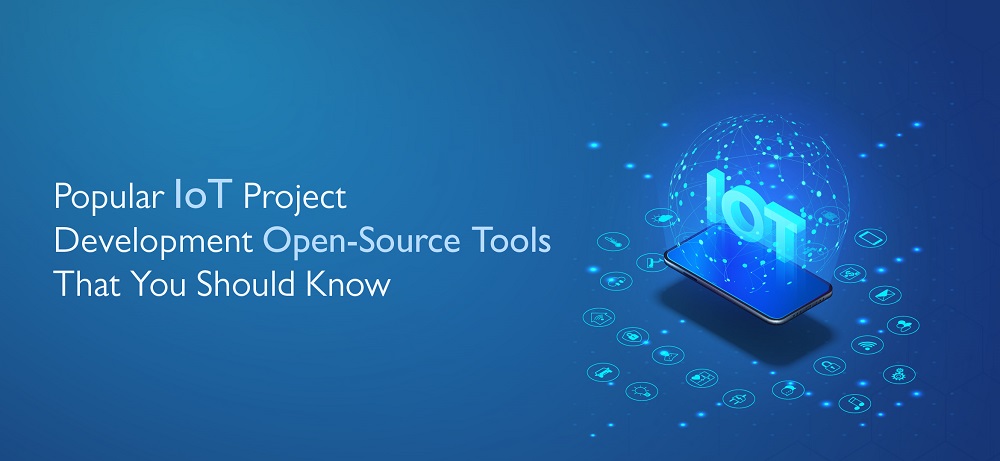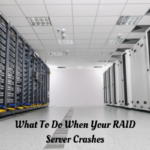The Internet of Things is a continuously growing technology that helps AI to understand and regulate system workloads through hardware-software automation in a considerably efficient way. In order to achieve powerful automation, IoT demands significant tools that are the core components of its ecosystem. IoT devices use standard Internet Protocols to give access to other devices and software, share information with each other, and fill the communication gaps between smart sensors and data channels.
Establishing a reliable IoT ecosystem is a complex task, which includes many components and procedures, such as hardware, networking platforms, connectors, analytical tools, servers, software, etc. Open-source technologies act as the best choice for developers in this scenario.
Additionally, organizations that are planning to adopt IoT technology are now looking for the alternatives to the costly IoT tools, which are open source, containing a wide community continuously putting their efforts into modernizing tools.
Recently, in one survey, IDC stated that the number of IoT connected devices might increase to 41.6 billion connections and generate a total 79.4 ZB data by 2025. With that, 64% of the global IT leaders agreed on open-source tools for being a valuable deployment platform for IoT. Furthermore, W3C stated that around 91% of global IoT Engineers use at least one open-source tool and technology from their development stack. These statistics show the elevation of the IoT market towards the open-stack community.
Therefore, we surveyed and picked up the best group of IoT platforms (frameworks) and tools that can suit your IoT project types.
Open-Source IoT Development Platforms & Frameworks:
IoT development platforms offer various software supporting system connectivity with networks and device sensors for communications, information sharing, and device & applications’ functionality management.
Let’s go through the popular IoT development platforms:
Kaa:
It is a multi-purpose IoT platform that helps to develop end-to-end integrated IoT solutions, which directly proposes reliable communication, management, and operational abilities. This platform supports microservices flexibly and can use them for any purposeful application.
Sitewhere:
This platform is based on data storage processing for IoT devices. It uses MQTT, SMQP, STOMP, and many other data network protocols to provide better IoT device connectivity. With these protocols, devices can put themselves for self-registration and REST operations altogether or in batches. This platform contains microservice architecture and provides better efficiency, productivity, low data losses, and reliability.
DeviceHive:
It provides faster device connectivity to the cloud ecosystem in the sense of data streaming and command traversing. It contains Apache 2.0 licensing and is highly agile while operating containerized platforms like Docker and Kubernetes.
Zetta:
This platform is built upon the Node.js technology stack that generates HTTP APIs for IoT devices by acting as a complete toolkit. It integrates REST APIs, WebSockets, and purposeful codes to develop intelligent applications that support real-time data insights.
Thingsboard:
This platform performs data storage, visualizations, and system maintenance related operations. It supports core IoT protocols, including MQTT, HTTP, and CoAP, and various cloud and on-system deployment tools.
There are other open-source IoT development platforms as well, such as mainflux, thingers.io, DSA, etc.
Open-Source IoT Middleware Platforms:
IoT middleware platforms help to enhance the interoperability of cross-enterprise applications and reduce their time-to-market by reusing the specific technology stacks, device components, and programming language libraries. They also reduce the chances of security breaches.
IoTSyS:
This middleware is specifically designed to support IoT development and process efficiency. It uses the IPv6 variation for devices that do not support IP connectivity. Its use cases are smart grid for developing smart cities, web technologies for device sensor and actuator connectivity.
OpenIoT:
It is mostly used to get information about device performance from storage sensors. OpenIoT converts itself into sensing as a service to deploy and operate services in the cloud platform.
Even many IoT development platforms also act as middleware, such as Kaa, Zetta, DeviceHive, etc.
Open-Source Hardware:
Arduino Uno:
It is a type of microcontroller that operates based on hardware configurations set by its IDE programs and provides an interactive device performance. This microcontroller contains around 14 input/output pins. The best thing about this is that anyone can afford it.
Raspberry Pi:
It is another microcontroller and an advanced version of Arduino. It can run all computer processes and can be said to be the mini-CPU. Raspberry Pi contains 26 General Purpose Input/Output pins, though which IoT component gets computing power.
MangOH:
This industrial-grade hardware is purposefully designed to identify general IoT system issues. By solving them, developers can deliver the best version of that IoT device prototype with reduced time-to-market.
Open-Source Operating Systems:
Android Things (Brillo):
It is the Google built OS that contains the power of an Android for integrated IoT devices and has access to all Google products, services, and tools.
RIOT:
This OS contains micro-kernel architecture that performs all tasks on a real-time basis for the IoT ecosystem.
Zephyr:
This OS is similar to RIOT and developed by Linux open-source community with the Apache license. It is a compact, agile, and powerful OS server for all data-intensive devices.
Ubuntu Core:
It is a Linux based OS designed specifically to support IoT devices. It is delivered in a Linux application package type, which is known as Snaps.
Open-Source IoT Device Security Tools:
For any IT development process, device security implementation is the crucial phase to consider, and the same applies to the IoT systems development process. In IoT devices, security vulnerabilities finding processes are automated that also looks for the user request traffic. As usual, the security measures on the IoT devices must be added at the initial stage of development with firmware tools. Ex., Princeton IoT Inspector, Mainflux, etc.
Final Words:
Finally, we would like to say that these mentioned open-source IoT tools and technologies help organizations achieve better efficiency, security, and scalability in all IoT operations within budget. CloudStakes Technology Pvt. Ltd. is the best IoT development, Testing, App Development, and Custom IoT solutions providers company in India. Book your 60 min IoT consulting service with our IoT experts today!


